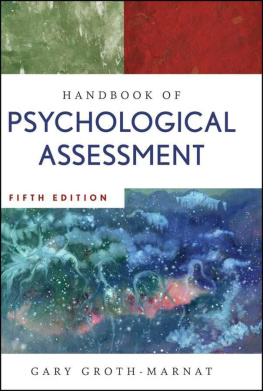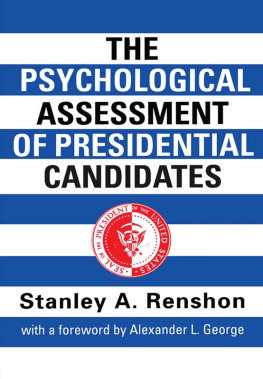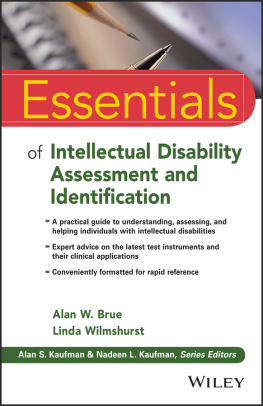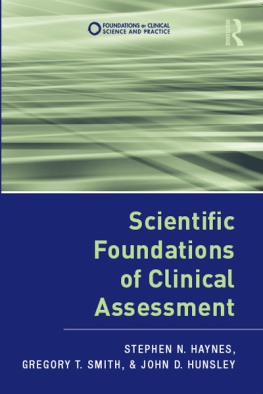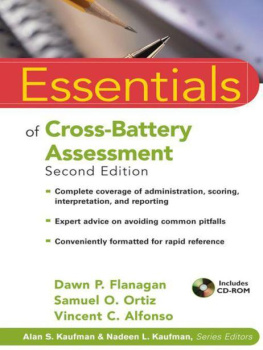Contents

This book is printed on acid-free paper. 
Copyright 2009 by John Wiley & Sons, Inc. All rights reserved.
Published by John Wiley & Sons, Inc., Hoboken, New Jersey.
Published simultaneously in Canada.
No part of this publication may be reproduced, stored in a retrieval system, or transmitted in any form or by any means, electronic, mechanical, photocopying, recording, scanning, or otherwise, except as permitted under Section 107 or 108 of the 1976 United States Copyright Act, without either the prior written permission of the Publisher, or authorization through payment of the appropriate per-copy fee to the Copyright Clearance Center, Inc., 222 Rosewood Drive, Danvers, MA 01923, (978) 750-8400, fax (978) 646-8600, or on the web at www.copyright.com . Requests to the Publisher for permission should be addressed to the Permissions Department, John Wiley & Sons, Inc., 111 River Street, Hoboken, NJ 07030, (201) 748-6011, fax (201) 748-6008.
Limit of Liability/Disclaimer of Warranty: While the publisher and author have used their best efforts in preparing this book, they make no representations or warranties with respect to the accuracy or completeness of the contents of this book and specifically disclaim any implied warranties of merchantability or fitness for a particular purpose. No warranty may be created or extended by sales representatives or written sales materials. The advice and strategies contained herein may not be suitable for your situation. You should consult with a professional where appropriate. Neither the publisher nor author shall be liable for any loss of profit or any other commercial damages, including but not limited to special, incidental, consequential, or other damages.
This publication is designed to provide accurate and authoritative information in regard to the subject matter covered. It is sold with the understanding that the publisher is not engaged in rendering professional services. If legal, accounting, medical, psychological or any other expert assistance is required, the services of a competent professional person should be sought.
Designations used by companies to distinguish their products are often claimed as trademarks. In all instances where John Wiley & Sons, Inc. is aware of a claim, the product names appear in initial capital or all capital letters. Readers, however, should contact the appropriate companies for more complete information regarding trademarks and registration.
For general information on our other products and services please contact our Customer Care Department within the U.S. at (800) 762-2974, outside the United States at (317) 572-3993 or fax (317) 572-4002.
Wiley also publishes its books in a variety of electronic formats. Some content that appears in print may not be available in electronic books. For more information about Wiley products, visit our website at www.wiley.com .
Library of Congress Cataloging-in-Publication Data:
Groth-Marnat, Gary.
Handbook of psychological assessment / Gary Groth-Marnat. 5th ed.
p. cm.
Includes bibliographical references and index.
ISBN 978-0-470-08358-1 (cloth)
1. Psychological tests. 2. Personality assessment. I. Title.
BF176.G76 2009
150.28'7dc22
2008032243
To My Students
Preface
My dear readers. Thank you so much for your support in buying and reading this book. My intention has been to create a resource that will cover the A to Z of assessment. In other words, my aim has been to provide guidance that extends from larger issues on assessment, to clarifying the referral question, and through to writing up the report and consulting with your referral sources and clients. I hope it brings clarity, practical guidelines, insights, and useful strategies to your work. Feedback on the previous editions assures me that this is often the case. This fact makes it worth all those long hours hidden away inside a small room incubating ideas and reading, writing, revising, and editing.
As with the previous editions, I have tried to integrate the best of science with the best of practice. Necessarily, psychological assessment involves technical knowledge. But in presenting this technical knowledge, I have tried to isolate, extract, and summarize in as clear a manner as possible the core information that is required for practitioners to function competently. At the same time, assessment is also about the very human side of understanding, helping, and making decisions about people. I hope I have been able to comfortably blend this technical (science) side with the human. An assessment that does not have at least some heart to it is cold and lacking. To keep in touch with the practitioner/human side of assessment, I have continually maintained an active practice in which I have tried to stay close to and interact with the ongoing personal and professional challenges of practitioners. I hope that within and between the sentences in the book, my active involvement with the world of practice is apparent.
It has been seven years since the previous (fourth) edition. During that time, much has changed and much has remained the same. The big tests that professional psychologists use most frequently are unchanged. This is reflected in that the numbers and titles of the chapters are the same as they were in the fourth edition. However, there are important changes within these chapters. Two of the most important are revised chapters incorporating the Wechsler Adult Intelligence Scale, Fourth Edition (WAIS-IV) and the Wechsler Memory Scale, Fourth Edition (WMS-IV). Another revision has been a somewhat more narrow focus for the chapter on screening for neuropsychological impairment, which has involved a focus on the Bender Visual Motor Gestalt Test, Second Edition (Bender-II) in combination with the relatively recently developed (1998) Repeatable Battery for the Assessment of Neuropsychological Status (RBANS). These are two fairly brief screening tests for neuropsychological impairment. The RBANS involves assessing a fairly wide number of domains (memory, visuospatial, attention, language) using revisions of assessment tools that have been frequently used in clinical neuropsychology. A final noteworthy addition has been the inclusion of greater information on diversity as reflected by separate test-related chapter subheadings entitled Use with Diverse Groups. This section reflects the more extensive use of assessment for a wide variety of populations and the importance of competently and sensitively working with diverse populations.
There are also many smaller changes throughout this fifth edition. It has been fully updated with new research in the field. There has also been greater emphasis on making assessment more user friendly and consumer oriented. This is reflected in suggestions for using everyday language in reports, connecting interpretations to actual client behavior, strategies for wording interpretations in a manner likely to enhance client growth, and the importance of collaborating with clients. Some chapters have organized interpretations by using bulleted phrases. Information on the Minnesota Multiphasic Personality Inventory-2 Restructured Form (MMPI-2 RF), MMPI-2 Personality Psychopathology Five (PSY-5), and the latest norms for the Rorschach have also been included. The psychological report writing chapter has been completely updated, including a new sample of psychological reports. I trust that these changes will provide readers with the best and the most practical of what can be available in assessment.

